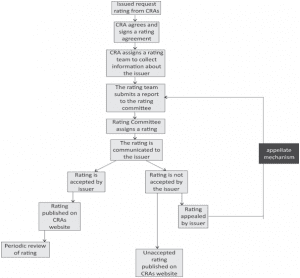DAILY CURRENT AFFAIRS (OCTOBER 26, 2022)
POLITY AND CONSTITUTION
WHAT IS FCRA, AND WHEN CAN AN NGO’S REGISTRATION BE CANCELLED?
THE CONTEXT: Recently, the Ministry of Home Affairs has cancelled the Foreign Contribution (Regulation) Act (FCRA) licence of Rajiv Gandhi Foundation (RGF) and Rajiv Gandhi Charitable Trust (RGCT), organisations that are associated with the Nehru-Gandhi family, for alleged violations of the provisions of the Act.
THE EXPLANATION:
What is the FCRA?
- The FCRA was enacted during the Emergency in 1976 amid apprehensions that foreign powers were interfering in India’s affairs by pumping money into the country through independent organisations.
- These concerns were, in fact, even older; they had been expressed in Parliament as early as in 1969.
Aim: The law sought to regulate foreign donations to individuals and associations so that they functioned in a manner consistent with the values of a sovereign democratic republic.
Prohibition:
The Act prohibits the receipt of foreign funds by candidates for elections, journalists or newspaper and media broadcast companies, judges and government servants, members of legislature and political parties or their office-bearers, and organisations of a political nature.
New guidelines to banks on Foreign Contribution (Regulation) Act rules
- State Bank of India’s New Delhi branch: A new provision that makes it mandatory for all NGOs to receive foreign funds in a designated bank account at the State Bank of India’s New Delhi branch was inserted.
- Designated FCRA account: All NGOs seeking foreign donations have to open a designated FCRA account at the SBI branch.
- The NGOs can retain their existing FCRA account in any other bank but it will have to be mandatorily linked to the SBI branch in New Delhi.
- Only banking channels allowed: Foreign contribution has to be received only through banking channels and it has to be accounted for in the manner prescribed.
- OCI or PIO: Donations are given in Indian rupees by any foreign source including foreigners of Indian origin like OCI or PIO cardholders” should also be treated as foreign contributions.
- Sovereignty and integrity: It requires NGOs to give an undertaking that the acceptance of foreign funds is not likely to prejudicially affect the sovereignty and integrity of India or impact friendly relations with any foreign state and does not disrupt communal harmony.
SATELLITE PHONES: WHAT ARE THEY, AND WHY IS THEIR USE RESTRICTED IN INDIA?
THE CONTEXT: A senior executive of Saudi Arabian oil company Saudi Aramco spent several days in prison in Chamoli district of Uttarakhand after he was arrested by police in July with an unauthorised satellite phone.
THE EXPLANATION:
What’s wrong with carrying a satellite phone?
- It’s not legal to carry one in India unless you have permission. Visitors to the country are specifically advised not to carry a satellite phone without permission. Restrictions on the possession and use of these phones were tightened after the Pakistani terrorists who attacked Mumbai in November 2008 used these devices to keep in touch with their Lashkar-e-Taiba handlers.
- The person was arrested under sections of the Indian Telegraph Act and the Indian Wireless Telegraphy Act.
What do these rules say?
- Section 6 of The Indian Wireless Telegraphy Act, 1933 makes it illegal to possess “any wireless telegraphy apparatus, other than a wireless transmitter, in contravention of the provisions of section 3 [of the Act]”.
- Section 3 says “no person shall possess wireless telegraphy apparatus” without a licence “save as provided by Section 4”.
- Section 4 of the Act allows the central government to make rules under the Act to “exempt any person or any class of persons from the provisions of this Act either generally or subject to prescribed conditions, or in respect of specified wireless telegraphy apparatus”.
According to the Department of Telecommunications says: “Satellite phones are permitted: (i) With specific permission/ NOC from Department of Telecommunications, Government of India; or (ii) As provisioned by M/s BSNL in accordance with license granted to M/s BSNL for provision and operation of satellite-based service using Gateway installed in India.”
ENVIRONMENT, ECOLOGY AND CLIMATE CHANGE
DELHI BREATHES ITS CLEANEST POST-DEEPAVALI AIR IN 8 YEARS
THE CONTEXT: According to Central Pollution Control Board (CPCB) data, the national capital breathed the cleanest post-Deepavali air in eight years.
THE EXPLANATION:
- Though violations of the ban imposed on bursting crackers were reported from across the city leading to a spike in PM2.5 levels (particulate matter 2.5), the air quality improved with time due to favourable meteorological conditions, according to experts. PM2.5 are fine inhalable particles which can get into the bloodstream through the lungs leading to a number of respiratory illnesses.
- Experts also attributed better air quality in the city a day after Deepavali to the festival occurring earlier this year when conditions are comparatively warmer and windier, aiding in the dispersion of the pollutants.
- Every year, Delhi experiences extreme air pollution in winter due to internal and external factors, including stubble burning in the neighbouring States.
Why better?
- Explaining the meteorological factors behind the fall in PM2.5 levels, experts say when Deepavali occurs later in the year “temperature drops and wind speed also drops. As wind speed drops, pollutants are not effectively dispersed and this leads to their accumulation”.
- As temperature drops, the mixing height (the height measured from the surface of the earth up to which pollutants can be dispersed in the atmosphere) also reduces.
- “When wind speed falls and mixing height lowers at the same time, the air gets trapped and this leads to higher pollution. But this year it was warmer, the wind speed was better and the mixing height was also not so low.
- That is why though firecrackers were burst, there was a dispersion of pollutants and it did not lead to a build-up”.
VALUE ADDITION:
Why Delhi air pollution rises in October?
- Northwesterly Winds: Month of October marks the withdrawal of Monsoon winds (South-West) from North India, leading to the arrival of North-Easterly winds.
- Monsoon winds carry Moisture and rainfall all over the country, whereas northwesterly winds carry dust from dust storms originating in Rajasthan and sometimes Pakistan and Afghanistan.
- As per the study conducted by scientists at the National Physical Laboratory, 72 per cent of Delhi’s wind in winters comes from the northwest, while the remaining 28 per cent comes from the Indo-Gangetic plains.
- One of such examples is a storm of 2017, originated from Iraq, Saudi Arabia and Kuwait that led to a drastic dip in Delhi’s air quality in a couple of days.
- Low-level inversion: Another factor is the temperature dip in the month of October. Low-temperature results in low-level inversion i.e. the layer that stops the upward movement of air from the layers below. It leads to the concentration of pollutants in the air at the lower heights.
- Wind speed: High wind speed in summers facilitates the faster movement of particulate matters in the air. As the wind speed decreases in winters, the air is not able to draw the pollutant away from a region.
- Industrial chimney wastes: There are a number of industries which are source of pollution. The chief gases are SO2 and NO2. There are many food and fertilizers industries which emit acid vapours in air.
- Automobiles pollution: The Toxic vehicular exhausts are a source of considerable air pollution. In all the major cities of the country about 800 to 1000 tonnes of pollutants are being emitted into the air daily, of which 50% come from automobile exhausts. According to the IIT Kanpur study, 20 % of PM 2.5 in winters comes from vehicular pollution.
The Central Pollution Control Board (CPCB)
|
THE PRELIMS PERSPECTIVE
THIS WORD MEANS: HAWK AIR DEFENCE EQUIPMENT
THE CONTEXT: The United States is considering retrieving older HAWK air defence equipment from storage to send to Ukraine which is facing a heavy barrage of Russian drone-fired and cruise missiles.
THE EXPLANATION:
HAWK after Stinger
- The HAWK interceptor missiles would be an upgrade to the Stinger missile system, which is a smaller, shorter-range air defence system. The US sent the shoulder-fired anti-aircraft Stingers to Ukraine early on in the war, and then placed orders for more stocks of the missiles with Raytheon Technologies Corp. after they demonstrated great success in stopping Russian air assaults.
- The US would likely initially send interceptor missiles for the HAWK system to Ukraine because it was unclear if enough US launchers — in storage for decades — were in good repairs.
PATRIOT predecessor
- HAWK, short for ‘Homing All the Way Killer’, entered service with the US Army in 1959, during the Vietnam war. It underwent upgrades over the decades that followed, including a major one in 1971 that produced the so-called I-HAWK (or improved HAWK), with a kill probability of 85%.
- The HAWK system was the predecessor to the PATRIOT missile defence system that Raytheon built in the 1990s. US forces largely stopped using HAWK from the early years of the new century. PATRIOT remains off the table for Ukraine.
THE CONTROVERSY AROUND BHOOTA KOLA RITUAL DEPICTED IN KANTARA
THE CONTEXT: Kannada film Kantara is being appreciated from all corners for its visual storytelling as well as compelling music and performances. However, the movie has also garnered controversies regarding the cultural practice of Bhoota Kola depicted in the movie.
THE EXPLANATION:
What is Bhoota Kola?

Bhoota Kola is an annual folk ritual of Tulu-speaking people in Dakshina Kannada, Uttara Kannada and Udupi in Karnataka where local spirits or deities are worshiped.
- As per Tulu Adivasi tradition, Bhoota Kola or Daiva Kola is a “non-vedic” ritual where Bhootas or Daivas (guardians and ancestors) are worshipped, reports The Quint.
- “Idols representing ‘bhoothas’ are taken out in a procession to the beating of drums and bursting of firecrackers.
Performance: Bhootada Kola is performed by a trained person who is believed to have temporarily become a god himself.
- The performer displays an aggressive outlook, dances fiercely and performs multiple rituals.
- This performer is feared and respected in the community and is believed to give answers to people’s problems on behalf of god. Drums and music give company to the dancing and pooja rituals.
Popular Bhootas: Panjurli, Bobbarya, Pilipoota, Kalkuda, Kalburti, Pilichamundi, Koti Chennaya are some of the popular gods (Bhootas) worshipped as part of Bhootada Kola.
Influence: Bhootada Kola is said to have some influence from Yakshagana, a more popular and widely performed folk dance in coastal Karnataka. Some of the Bhootada Kola rituals also involve walking on a bed of hot coal.
CYCLONE SITRANG’
THE CONTEXT: According to the India Meteorological Department (IMD) the developing cyclonic storm in the Bay of Bengal — Cyclone Sitrang — will bypass Odisha and make landfall near West Bengal-Bangladesh coasts.
THE EXPLANATION:
- The India Meteorological Department forecasted that a low-pressure area is likely to form over the southeast and adjoining east-central Bay of Bengal.
- The low-pressure area in turn could intensify into a cyclonic storm that could affect Odisha, West Bengal, the northern part of Andhra Pradesh and adjoining areas.
The name Sitrang
- The name Sitrang has been given by
- Sitrang will follow cyclone Asani, which developed in the Bay of Bengal in early May this year. This will be the second cyclonic storm of 2022.
- The cyclones that are forming over the north Indian Ocean, including the Arabian Sea and Bay of Bengal, are given names by IMD. Thirteen members—Bangladesh, India, Iran, Maldives, Myanmar, Oman, Pakistan, Qatar, Saudi Arabia, Sri Lanka, Thailand, United Arab Emirates, and Yemen—are given warnings about tropical cyclones and storm surges by the IMD.
